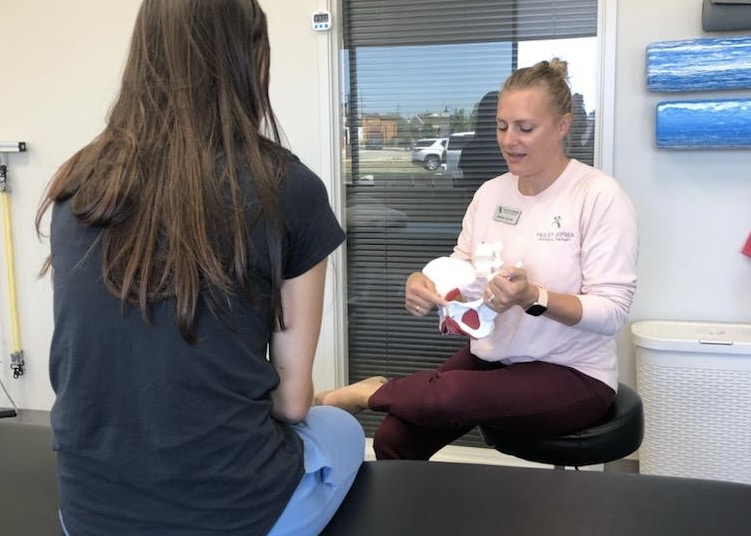Pubic Symphysis Pain in Pregnancy

What is it?
Pain in the groin or pubic region. In pregnancy, your ligaments increase in laxity to allow more movement of the pelvis in preparation for childbirth. Add the increased weight from the growing baby and you can end up with pain in the pubic region!
What to do:
Avoid activities that cause your legs to be spread far apart because this can put extra strain on the pubic symphysis. For example, some painful activities might include taking long steps while walking, getting in/out of the car, or walking upstairs. While it’s likely impossible to avoid these activities all together, you can modify them fairly easy to help decrease discomfort. The key is to remember to keep your knees squeezed together during painful activities.
- When navigating stairs, try taking it one stair at a time with a step-to pattern. Or if that’s still painful, you can try going up sideways one step at a time
- When getting out of bed, squeeze a pillow between your knees and roll to your side. From there, let your legs down over the side and push through your arm to a sitting position.
- When getting into the car, back up to the seat and sit down first. Then lift both legs together into the car as you swivel in. You can even place a plastic grocery bag on the seat to help you swivel more easily. Reverse this as you get out.
- Take shorter steps and imagine if your pelvis was a bowl of soup. Try to keep things as level as possible to not pour out the soup.
Exercises:
By stabilizing the major muscle groups that support your pelvis, you can help to decrease some of your discomforts. Complete the following exercise program 3x a day. If the exercises increase pain or discomfort, hold off and talk to your physician about starting physical therapy to keep you mobile during your pregnancy.
- Abdominal stabilization (transversus abdominis, external and internal oblique, and multifidus muscles) — Sitting with your feet resting on the floor, gently pulling in your lower abdominal muscles as if you are hugging your baby. Hold for 5 seconds. Repeat 5 times, continuing to breathe normally.
- Pelvic floor — Sitting tall, squeeze to close around your openings. Lift and hold for 5 seconds. Repeat 5 times. Breathe normally throughout.
- Gluteus maximus muscle — Sitting or standing, squeezing buttocks together. Hold for 5 seconds. Repeat 5 times.
- Latissimus dorsi muscle — Sit on a chair in front of a table or a closed door. Grasp the door handle or table with both hands and pull it toward you. Hold for 5 seconds. Repeat 5 times.
- Hip adductor muscles — Sitting down, put your fist or a rolled towel between your knees. Squeeze knees together. Hold for 5 seconds. Repeat 5 times.
Are you dealing with pelvic floor issues, pain, or discomfort? Call 616.256.8679 to schedule an appointment with one of our pelvic floor physical therapists. For more information, visit https://www.hjphysicaltherapy.com/specialties/pelvic-floor-rehabilitation/.
